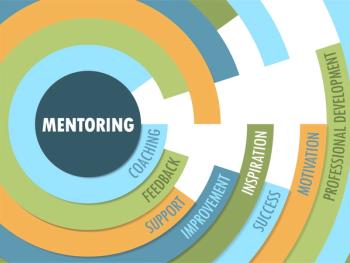
- Vol 31 No 10
- Volume 31
- Issue 10
Sharing the Burden of Intercultural Stress
The manner in which a clinician enters the room and approaches and engages with an intercultural patient and family can either set off or relieve “culture shock.”
We seem to live in an ever-expanding world that demands “more of everything.” The fluid nature of global business, education, scientific, and medical communities allows individuals to meet and interact routinely with people from diverse cultures. Knowing this, we recognize gaps in how we manage daily intercultural contacts. How may we make good use of our interactions as medical practitioners?
The
Modulating more of everything
Struggles with intercultural relations are timeless and universal. Techniques to cope with these interactions harken back to tales of medical missionaries and travelers to distant parts of the world. Weaver2 describes “culture shock” as a process of cross-cultural adjustment. Every individual is raised within a particular cultural milieu in which nervous system modulation establishes a unique excitation and habituation level. The nervous system receives external cues that give one a sense of familiarity, a “comfort zone.” An intercultural contact or unfamiliar event often results in a stress reaction that renders one outside of the comfort zone.
Some cultural competence workshops focus on memorizing culture-specific information in preparation for intercultural contact endeavors. Instead, Weaver2 suggests that we use these interactions as “an opportunity to experience some of the ambiguity, confusion, uncertainty, and frustration involved in cross-cultural adaptation and intercultural communication.” Experiencing one’s own intercultural contact stress reactions permits participants to gain insight into the experience.
In the safe context of a workshop setting, for example, individual stress reactions, as well as coping and communication skills, can be monitored. Insight into the enormous effort, energy, and concentration to participate in an intercultural contact is critical. Participants who complete these workshops are consciously exposed to structured nervous system challenges and may approach intercultural contact more sensitively in the future. They are more equipped to recognize and modulate stress reaction symptoms in themselves and others.
Weaver’s suggestions illuminate two critical ideas. First, intercultural contact stress reaction is experienced at a “gut level” and mediated via the somatosensory and nervous systems; it is not a cognitive experience and likely not relieved by cognitive caring alone. Proper training can better prepare one to manage inevitable culture shock-those unexpected feelings of disorientation, anxiety, and frustration that occur when confronted with loss of familiar cues, breakdown of interpersonal communication, and identity crisis.2(pp190-191)
Second, during an intercultural clinical encounter, the patient is not the only one who experiences cultural distress. Although the cross-cultural patient, on entering the medical clinic, represents the “non-dominant” culture, the clinician also undergoes an intercultural contact stress reaction. This is especially true when the clinician is unable to communicate effectively with a patient about clinical needs, goals, and treatment.2
Cognitive care alone may actually pose a barrier between patient and treatment provider. Focusing on the cognitive understanding of intercultural interactions places an asymmetric burden on the patient who is experiencing an intercultural contact stress reaction. Disturbingly, the intercultural contact may become another aspect of the clinical relationship for the clinician to mend later.
The OMH
Sharing the burden
Suppose we wanted to change this dynamic.
These skills can be acquired through workshops that use Weaver’s recommendations.4 The practitioner learns to use cultivated self-awareness and calming techniques to modulate his or her stress reaction and to assist in modulating the patient’s reaction. These components actively help the patient remain in the comfort zone. The manner in which a clinician enters the room and approaches and engages with an intercultural patient and family can either set off or relieve culture shock through nervous system modulation. (For a summary of key concepts, see the Table).
For the presenting clinical difficulty to be the focus of an intercultural encounter, clinicians should:
• Remain aware of nervous system stress reactions in themselves and in their intercultural patients
• Display calm accessibility in the face of such stress
• Aspire to modulate stress reactions associated with “more of everything”
The impact of moving beyond cognitive caring is to diminish the bilateral stress reaction involved in an intercultural contact, permitting the focus of a clinical visit to be the clinical visit itself.
This article was originally posted on 8/8/2014 and has since been updated.
Disclosures:
Dr Kissinger is Assistant Clinical Professor in the department of psychiatry, John A. Burns School of Medicine, University of Hawaii in Honolulu. She completed her Child and Adolescent Psychiatry Fellowship and her Addiction Psychiatry Fellowship with the department of psychiatry at the University of Hawaii. She reports no conflicts of interest concerning the subject matter of this article.
References:
1. Office of Minority Health. Cultural competency.
2. Weaver GR. Understanding and coping with cross-cultural adjustment stress. In: Weaver GR, ed. Culture, Communication and Conflict: Readings in Intercultural Relations. 2nd ed, revised. Boston: Pearson Publishing; 2000.
3. Wikiquote. Archimedes.
4. Kissinger D, Zuniga D. Culturally cognizant communication. Presented at: Western Group of Educational Affairs (WGEA); March 25, 2014; University of Hawaii at Manoa.
Articles in this issue
about 11 years ago
Introduction: The Challenges of Treating Older Adultsabout 11 years ago
Hoarding in Late Life: Implications for Cliniciansabout 11 years ago
Diagnosis and Treatment of Late-Life Depressionabout 11 years ago
Treating Complex Trauma Survivorsabout 11 years ago
Severely Depressed Most Responsive to Combined Cognitive and Drug Rxabout 11 years ago
Strategies for Treatment-Resistant OCDover 11 years ago
The Most Exciting Time in the History of Psychiatryover 11 years ago
ExtinctionNewsletter
Receive trusted psychiatric news, expert analysis, and clinical insights — subscribe today to support your practice and your patients.

















